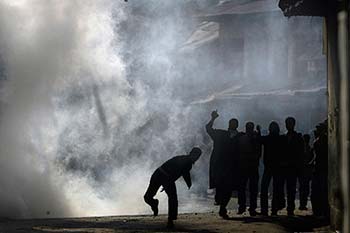You lie out in the sun hoping to get a golden tan, but instead walk away from your lounge chair looking like a lobster that’s been left in the pot too long.
Despite health warnings about sun damage many of us still subject our skin to the sun’s burning rays.
What is Sunburn?

Sunburn is a form of radiation burn that affects living tissue, such as skin, that results from an overexposure to ultraviolet
(UV) radiation, commonly from the sun. An excess of UV radiation can be life-threatening in extreme cases. Excessive UV radiation is the leading cause of primarily non-malignant skin tumours.
Sunburn is an inflammatory response in the skin triggered by direct DNA damage by UV radiation. When the skin cells’ DNA is overly damaged by UV radiation, type I cell-death is triggered and the skin is replaced
Here’s what you need to know about how to keep your skin safe and where to find sunburn relief if you are exposed to sun for long.
What Causes Sunburn
You already know the simple explanation behind sunburn. When your skin is exposed to the sun for a period of time, eventually it burns, turning red and irritated.
Under the skin, things get a little more complicated. The sun gives off three wavelengths of ultraviolet light:
UVA
UVB
UVC
A sunburn is the skin’s response to extreme ultraviolet (UV) exposure and indicates severe damage. In as little as 10 minutes of intense UV exposure, the skin sets into motion a system of defense against this enemy.
The first indication of damage is redness. This is the body’s inflammatory response in situations requiring repair and is a result of dilating blood vessels. The skin will then start to lose moisture and hydration, which will be apparent with a feeling of tightness. Slowly, skin cells will start to thicken and melanin (pigment) will be produced (tanning) in an attempt to stop the UV rays from penetrating through to the deeper layers and damaging the DNA of the cells.
Exposure of skin to high levels of sunlight may result in hypo or hyperpigmentation, which appears as irregular light or dark patches. The body is excellent at coping with minimal amounts of damage, but if exposure is greater than the body’s ability to repair and mop up, more serious consequences may result. If DNA is damaged and its repair mechanisms are inhibited, skin cancer may occur.
Avoiding sunburn in the first place is better than having to treat its effects.
Symptoms of sunburn
Sunburn can be very uncomfortable indeed.
The symptoms of sunburn vary from person to person. You may not notice redness of the skin for several hours after the burn has begun. Peak redness will take 12-24 hours.
Minor sunburns typically cause nothing more than slight redness and tenderness to the affected areas.
In more serious cases, blistering can occur. Extreme sunburns can be painful to the point of debilitation and may require hospital care.
In much more severe cases, symptoms include:
fever
chills
nausea and vomiting
weakness
In extreme cases, symptoms of shock can occur, for instance:
low blood pressure
fainting
extreme weakness
Sunburn can occur in less than 15 minutes, but the harm is often not immediately obvious.
After the exposure, skin may turn red in as little as 30 minutes, but most often takes 2-6 hours. Pain is usually most extreme 6-48 hours after exposure. The burn continues to develop for 24-72 hours, sometimes followed by peeling skin in 3-8 days.
Some peeling and itching may continue for several weeks.
Why Does the Skin Peel?
Peeling after sunburn is your body’s way of getting rid of the damaged cells that are at risk of “losing control” and becoming cancerous. Due to this danger, all damaged cells are instructed to sacrifice themselves by repair mechanisms within these cells. This mass death of cells results in whole layers of damaged skin peeling off, to be replaced by other cells underneath those layers.
I Have a Sunburn, What Should I Do Now?
First of all, you should take care of the cause of your problem: get out of the sun immediately. Drink plenty of water as you may be dehydrated. If skin is severely blistered, seek help from a medical practitioner. Otherwise it is important to take down the inflammation and try to reduce damage to the deeper layers of your skin.
Take a cool bath (no products added) and then blot skin dry. Avoid greasy creams, which prevent the skin from cooling and may make the situation worse. Rather, apply generously a soothing after-sun gel to red areas and then stay out of the sun and the heat. Look for ingredients such as Clove, Licorice, Lavender, Cucumber and Yucca to reduce irritation, pain and redness. Also look out for an incredible ingredient called Japanese Alder to accelerate the repair of UV-induced DNA damage. Couple this with ingredients such as Algae and Hyaluronic Acid to rehydrate the skin and you should be well on your way to a calmer skin.
And no, it is not then OK to go out into the sun the next day for another blast! Remember, your skin is still trying to heal and so must be kept out of direct sunlight for a good few days. Keep in mind, the skin is a great record keeper. Even with a great after-sun product, irreparable damage may have occurred in the form of premature aging or skin cancer that may only reveal itself later. Think twice next time you decide “just another 10 minutes;” –your immune system is listening!















